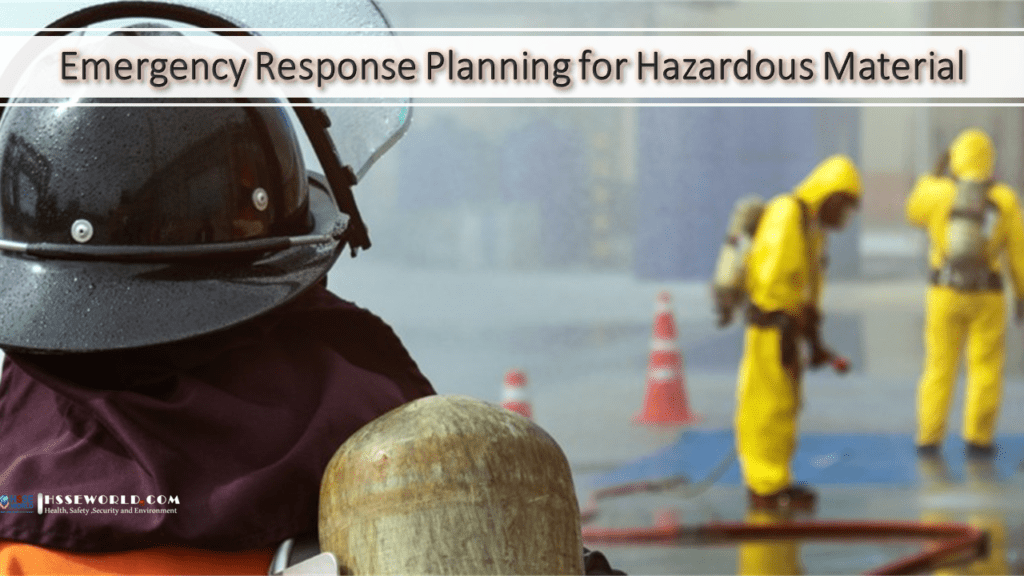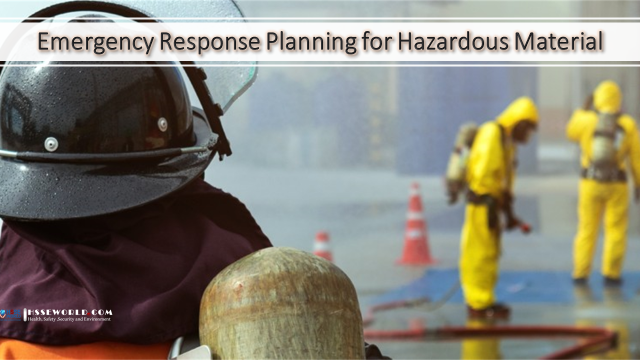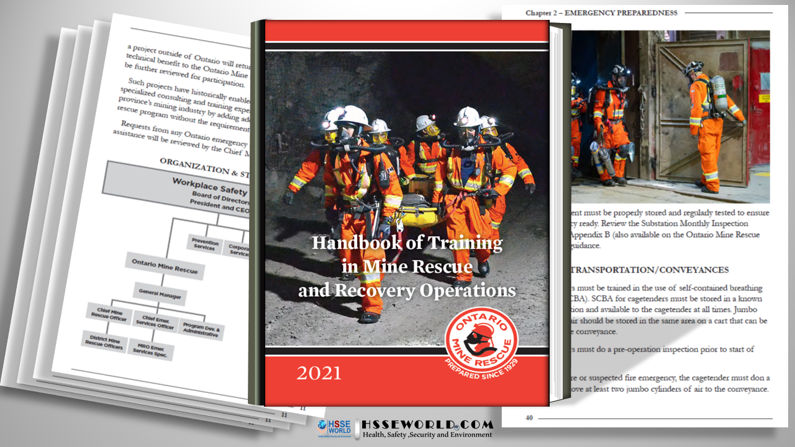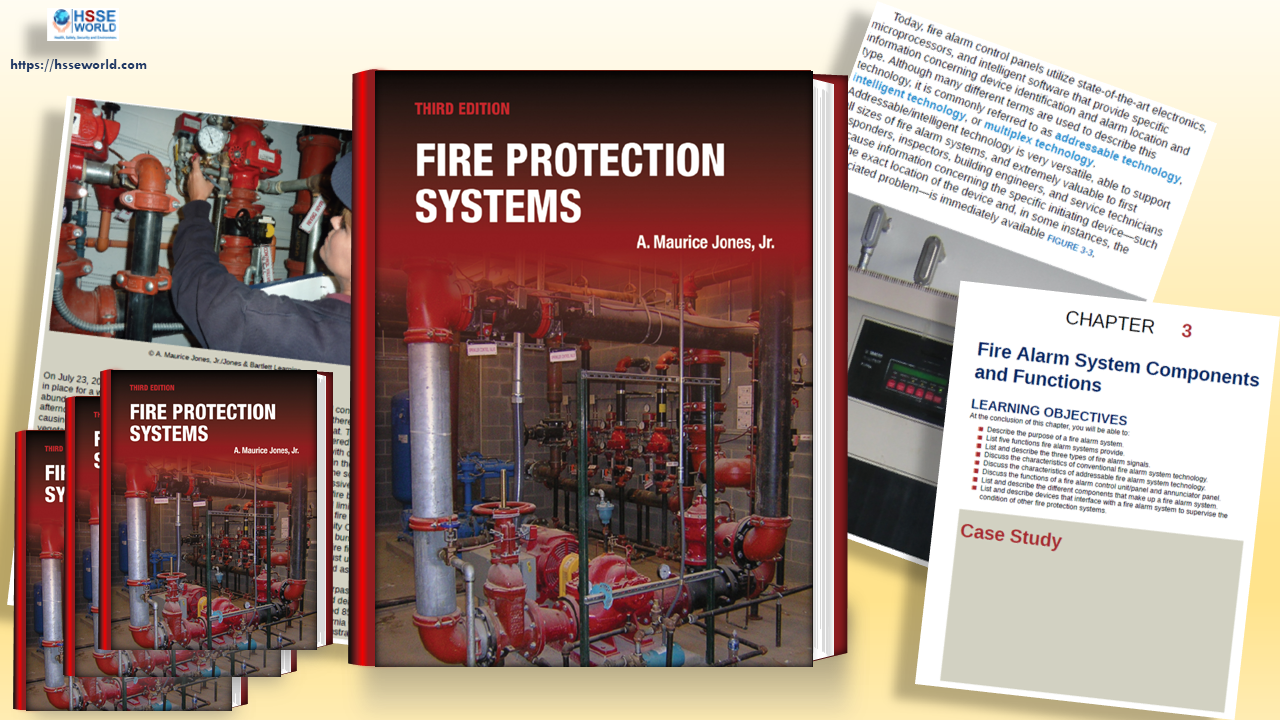Hazardous materials can be found in every community. They are in almost every home and in most hospitals and factories. Hazardous materials are shipped every day via land, air, and sea pathways and are frequently used to inspect pipelines If released, hazardous materials may cause harm to people, the environment, critical infrastructure, and property. Their potential for harm exists regardless of whether hazardous materials are released by accident, malicious actor, fire, or weather-related event.
Hazardous material incidents affect a range of stakeholders in the whole community. Workers in facilities who regularly use or handle hazardous materials, transportation carriers, nearby residents and students, first responders, and first receivers2 are all at risk of health impacts from hazardous materials.
Employers who use, store, or dispose of hazardous substances will demonstrate knowledge of OSHA’s 29 CFR 1910.120 requirements for Emergency Response Program training, medical surveillance, personal protective equipment (PPE), and decontamination for response personnel.
This Article aims to provide information and procedures on the Occupational Safety and Health Administration’s (OSHA) requirements for emergency response and control of incidents involving hazardous material.
Also Read: Spill Containment and Spill Prevention and Control Countermeasures

Background
In 1986, Congress passed the Superfund Amendment and Reauthorization Act, commonly known as SARA. Under SARA, the Environmental Protection Agency mandated that OSHA issue protective requirements for personnel engaged in response operations. In March 1990, OSHA issued the final Rule – 29 CFR 1910.120 Hazardous Waste Operations and Emergency Response (HazWOPER).
The HazWOPER applies to the following:
- cleanup operations required by any federal, state, or local government body at any uncontrolled hazardous waste site;
- any corrective action involving the first-time cleanup under the Resource Conservation and Recovery Act (RCRA) program;
- any volunteer cleanup operation at either an uncontrolled hazardous waste site or RCRA site;
- operations involving hazardous waste at treatment storage and disposal sites; and
- emergency response operations for release, or substantial release threat, of hazardous substances without regard to the location of the hazard.
Also Download: Photo of the day: Incident Investigations
This last category is broad in scope and covers a wide variety of chemicals and wastes. This category covers most jobs, processes, or operations that use, store, or dispose of hazardous substances. Among the requirements under the HazWOPER standard, employers must provide a written emergency response plan, training, and control and cleanup operations.
Specific requirements must be complied with under the HazWOPER standard. These requirements include a written emergency response plan, training, and control and cleanup operations.
Also Read: Tips for Chemical spills Preparation and Incident Response
The Plan
The emergency response plan is a portion of the employer’s written health and safety program. Employers whose employees do not assist in handling hazardous waste emergencies are exempt from this portion of HazWOPER, provided they have a written emergency action plan complying with 29 CFR 1910.38(a).
The written Emergency Response Plan must address the following areas:
- pre-emergency planning and coordination with outside responding agencies, such as fire, EMS, and police;
- personnel roles, lines of authority, and lines of communication;
- emergency recognition and prevention (what constitutes an emergency and how to prevent the occurrence);
- safe distances and places of refuge;
- site security and control;
- evacuation routes and procedures;
- decontamination procedures;
- emergency medical treatment and first aid;
- emergency alerts and response;
- PPE and emergency equipment;
- engineering controls;
- air monitoring; and
- critique of response procedures and follow-up.
In addition to a written emergency response plan, OSHA requires emergency response program personnel to receive a medical surveillance program. Personnel responding to emergency hazardous material releases must receive an initial baseline physical, an annual physical, and an additional physical at employment termination.
Training
Training under the HazWOPER standard is required for any employee who responds to an emergency. Section Q of the standard specifies the training requirements, which are broken down into 5 training levels of specific duties:
Level One: First Responder Awareness
This level increases employees’ awareness of any release of hazardous substances and how to properly initiate an emergency response team. The employee must be able to demonstrate awareness, identification, and recognition of hazards, understand risks and potential outcomes, and their role in an emergency response plan. Between four and eight hours of training are acceptable at this level.
Level Two: First Responder Operations
This response training is defensive in nature, with containment and the prevention of spread and exposure key goals. This level trains workers to contain a release, slow the spread of hazardous material, and prevent exposure. A minimum of eight hours of training is required. Level 2 responders must know everything that Level 1 personnel know, plus are required to take the complete 24- hour HazWOPER program. Additionally, they must know how to select and use PPE, confine and control a simple spill, and decontaminate the spill.
Level Three: Hazardous Materials Technician
This level teaches employees how to stop the release of hazardous material by patching, plugging, or repairing the vessel or container that is leaking. Training must be at least 24 hours in length. In addition to covering the same topics as Level 2, the hazardous material technicians must receive training to:
- implement the company’s emergency response plan;
- identify specific substances through the use of special instruments;
- perform advanced containment operations; and
- identify personnel who exhibit exposure symptoms.
This training level often includes at least one day of field experience.
Level Four: Hazardous Materials Specialist
This specialist assists the technician in containing the spill and provides expertise in containing hazardous substances. The specialist also acts as the on-site liaison with government authorities. At this level, OSHA requires at least 24 hours of training.
However, it is not uncommon for employees to receive 40 hours of instruction. Training for the hazardous material specialist begins with Level Two and Level Three instruction. Specialists are trained to implement the company, state, and local emergency response plans. Specialists must have in-depth knowledge of on-site hazardous materials, hazard and risk assessment techniques, and hazardous material disposal.
Level Five: On-Site Incident Commander
This person is in charge of the entire response, cleanup, and disposal operation. OSHA requires a minimum of 24 hours of training at this level. Many employers provide up to 40 hours of training. Training covers the following topics:
- the company’s Incident Command System (ICS);
- emergency response plan;
- local, state, and federal emergency response plans;
- personal protective equipment; and
- decontamination of responders and equipment.
At each level, training requires certification and documentation. Employees must demonstrate proficiency during each annual refresher training. If an emergency response team is obligated under a mutual aid agreement to respond to an off-site incident, the 24-hour emergency training and response procedures are valid during the emergency period only, such as during rescue, containment, and control. However, if an emergency response team is engaged in the cleanup of a hazardous waste site, training must comply with all regulations covering hazardous waste-site remediation in 29 CFR 1910.120(a)(l)(i), and the full 40-hour training is required.
Control and Cleanup

Unless exempt, employers are responsible for spill containment and cleanup. All employees must receive Level One training. The Hazard Communication Program does not provide the OSHA-required information and is not a substitute for Level One training. At least two Level Two technicians are required to slow and control a hazardous spill as specified in HazWOPER, which mandates a buddy system in these circumstances. Also, a trained Level Five Incident Commander must be present.
Once the spill is contained, it must be stopped at the source, cleaned, and disposed of properly.
There are two alternatives when handling incidences:
- Hire a Trained Response Team Many companies train their employees to Level Three to stop and contain the spill, then hire a contract company to clean up, transport, and properly dispose of the spill. This method is expensive but limits the company’s liability.
- Use an In-House Response Team The alternative of providing the minimum required training to employees has several advantages. It creates safety awareness, provides total control of the incident, and may reduce costs. However, the company
Decontamination
The decontamination plan should:
- determine the number and layout of required stations;
- determine the equipment needed;
- determine appropriate methods;
- establish procedures to prevent contamination of clean areas;
- establish methods and procedures to minimize worker contact with contaminants during removal of PPE; and
- establish methods for disposing of decontaminated clothing and equipment.
Also Read: 6 Tips to Ensure GHS Compliance for Smaller, Down-Packed Chemical Container Labels
Review Questions
- An emergency response plan establishes personnel roles, lines of authority, and lines of communication. T or F
- Emergency recognition and prevention are not included in an effective emergency response plan. T or F
- Safe distances and places of refuge are essential components of an emergency response plan. T or F
- Decontamination procedures, emergency medical treatment, and first aid are not included in an emergency response plan because they are incident-specific. T or F
- Alternatives for dealing with a hazardous spill include hiring a trained response team or
- developing an in-house response team. T or F
- PPE, decontamination of responders and equipment, and the company’s ICS are all training topics for the incident commander. T or F
- The emergency response team requires 40 hours of training when the task becomes site remediation instead of emergency response. T or F
Answers
1. T; 2. F; 3. T; 4. F; 5. T; 6. T; 7. T
Also, Read: E-Books: Fire Engineering and Emergency Planning
Please visit our Safety Resources SAFETY BAG to have many Safety Resources





